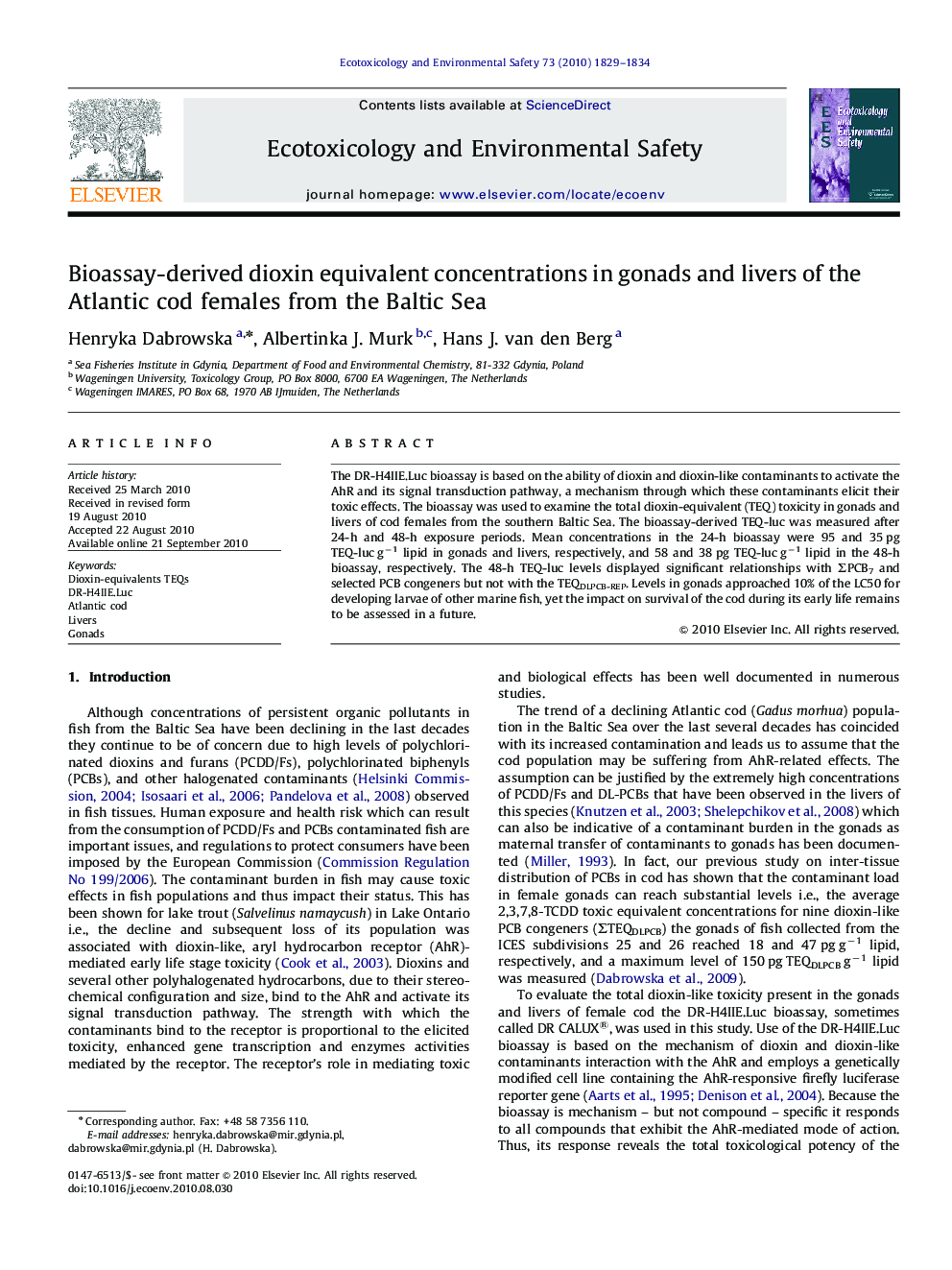| کد مقاله | کد نشریه | سال انتشار | مقاله انگلیسی | نسخه تمام متن |
|---|---|---|---|---|
| 4421560 | 1308516 | 2010 | 6 صفحه PDF | دانلود رایگان |

The DR-H4IIE.Luc bioassay is based on the ability of dioxin and dioxin-like contaminants to activate the AhR and its signal transduction pathway, a mechanism through which these contaminants elicit their toxic effects. The bioassay was used to examine the total dioxin-equivalent (TEQ) toxicity in gonads and livers of cod females from the southern Baltic Sea. The bioassay-derived TEQ-luc was measured after 24-h and 48-h exposure periods. Mean concentrations in the 24-h bioassay were 95 and 35 pg TEQ-luc g−1 lipid in gonads and livers, respectively, and 58 and 38 pg TEQ-luc g−1 lipid in the 48-h bioassay, respectively. The 48-h TEQ-luc levels displayed significant relationships with ΣPCB7 and selected PCB congeners but not with the TEQDLPCB-REP. Levels in gonads approached 10% of the LC50 for developing larvae of other marine fish, yet the impact on survival of the cod during its early life remains to be assessed in a future.
Journal: Ecotoxicology and Environmental Safety - Volume 73, Issue 8, November 2010, Pages 1829–1834